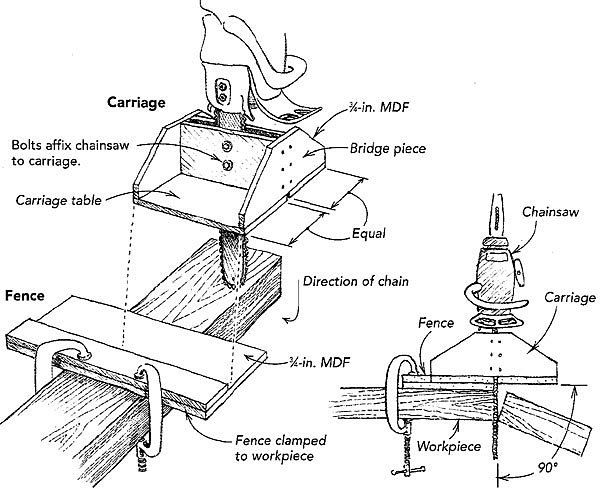
Our crew landed a framing job on a big house in Sun Valley, Idaho. Among the challenges were the 1,000 or so notches in the timber-framed roof. Each 3×10 rafter has at least three bird’s-mouth cuts in it, and nearly every one of them is exposed.
Attempting to make these cuts with a circular saw would have left much of the cut incomplete, even when cut from both sides. Then each one would require a handsaw to finish it off. We tried a jigsaw, but because of the thickness of the rafters, it proved awkward at best. As shown in the drawing, the jig we put together to solve this problem put our electric chainsaw to use as an unlikely trim saw.
The jig consists of two pieces. One piece is the carriage, made of 3/4-in. medium-density fiberboard (MDF), to which the chainsaw is bolted. The carriage base is a table that slides across the second part of the jig: the fence.
The carriage is screwed together, which allows disassembly should the operator need to gain access to the chain for sharpening or tension adjustments. A couple of 2-1/4-in. long, 3/4-in.-dia. bolts affix the saw to the carriage. They run through holes precisely centered in the chainsaw’s bar. Washers between the carriage and the bar prevent the carriage from pinching the chain. Each side of the carriage is the same width, which allows the use of the fence on either the right or left side. That means we don’t have to flip a rafter to cut both sides of a bird’s mouth. Gluing some sandpaper to the bottom of the fence helps to keep it in place as it’s being clamped.
Using this rig, we were able to cut a pair of 3-in. thick rafters simultaneously without rolling over either of them. For stopped cuts, I screwed a stop to the fence and cleaned up whatever material remained in a corner with a chisel. To my surprise, the saw cut even the shallow angle of a bird’s mouth without a hitch. I thought it might want to walk, but this wasn’t a problem.
Note that the saw is pushed into the workpiece with the chain oriented so that it cuts on the upstroke. This way, it’s always pulling the carriage toward the fence. I found it most comfortable to push the carriage from the center of the bridge piece into the work with one hand, with the other hand on the trigger grip.
For this setup to work well, the saw has to be in perfect shape. Worn bars have different-height shoulders that cause curved cuts. We used a fine-tooth chain, which yielded clean cuts as long as we kept it sharp.
And remember, chainsaws are among the most dangerous power tools. Use them with an extra measure of caution. Use the shortest bar possible to cut through the work, and if the bar extends beyond the depth of the workpiece, be careful not to let it touch anything. To do so can cause the saw to kick back at the operator.
—Bill Amaya, Hailey, ID
Edited and illustrated by Charles Miller
From Fine Homebuilding #146
Fine Homebuilding Recommended Products
Fine Homebuilding receives a commission for items purchased through links on this site, including Amazon Associates and other affiliate advertising programs.

Flashing Boot

Roof Jacks

Shingle Ripper








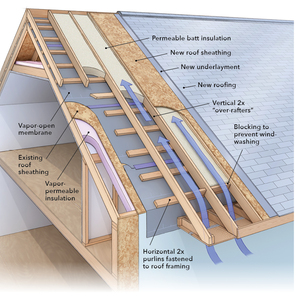
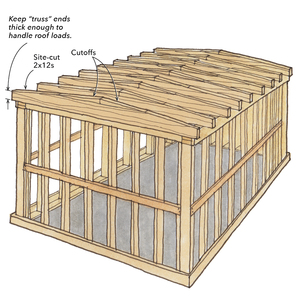






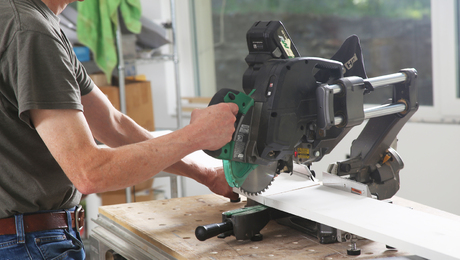
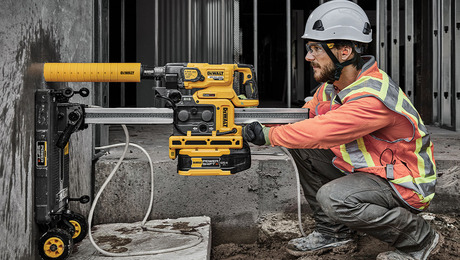
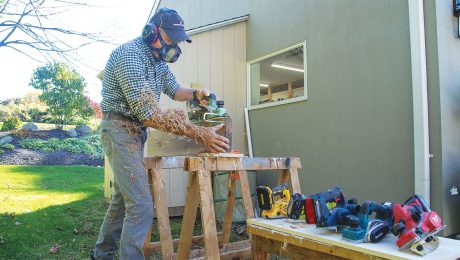











View Comments
To boldly go where no man has gone before. Yes, chainsaws are unbelievably dangerous, but as with any power tool abundant caution and careful prep help minimize the risk. Still, only experienced users, please. Also, an electric one without all the noise is much less distracting.
Or you could just buy a Prazi BeamCutter...
http://www.praziusa.com/12-beam-cutter-model-pr-2700/
Once again, FH is recycling a tip that was kinda cool 20 years ago, but really passé today.
And, in the interest of equal representation, a Bigfoot Head Cutter
http://bigfootsaws.com/bigfootproduct/head-cutter/
I have a question : how to print those very interesting tips ? Is there an easy way ?
Thanks for your help !
Michel
Do a screen grab to clipboard and drop that into Powerpoint or Word. Or grab it to file (pdf) and print that.